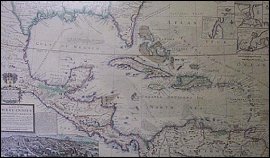How Sugar is Made - the HistoryIt is thought that cane sugar was first used by man in Polynesia from where it spread to India. In 510 BC the Emperor Darius of what was then Persia invaded India where he found "the reed which gives honey without bees". The secret of cane sugar, as with many other of man's discoveries, was kept a closely guarded secret whilst the finished product was exported for a rich profit. 
It was the major expansion of the Arab peoples in the seventh century AD that led to a breaking of the secret. When they invaded Persia in 642 AD they found sugar cane being grown and learnt how sugar was made. As their expansion continued they established sugar production in other lands that they conquered including North Africa and Spain. Sugar was only discovered by western Europeans as a result of the Crusades in the 11th Century AD. Crusaders returning home talked of this "new spice" and how pleasant it was. The first sugar was recorded in England in 1099. The subsequent centuries saw a major expansion of western European trade with the East, including the importation of sugar. It is recorded, for instance, that sugar was available in London at "two shillings a pound" in 1319 AD. This equates to about US$100 per kilo at today's prices so it was very much a luxury. 
In the 15th century AD, European sugar was refined in Venice, confirmation that even then when quantities were small, it was difficult to transport sugar as a food grade product. In the same century, Columbus sailed to the Americas, the "New World". It is recorded that in 1493 he took sugar cane plants to grow in the Caribbean. The climate there was so advantageous for the growth of the cane that an industry was quickly established. By 1750 there were 120 sugar refineries operating in Britain. Their combined output was only 30,000 tons per annum. At this stage sugar was still a luxury and vast profits were made to the extent that sugar was called "white gold". Governments recognised the vast profits to be made from sugar and taxed it highly. In Britain for instance, sugar tax in 1781 totalled £326,000, a figure that had grown by 1815 to £3,000,000. This situation was to stay until 1874 when the British government, under Prime Minister Gladstone, abolished the tax and brought sugar prices within the means of the ordinary citizen. Sugar beet was first identified as a source of sugar in 1747. No doubt the vested interests in the cane sugar plantations made sure that it stayed as no more than a curiosity, a situation that prevailed until the Napoleonic wars at the start of the 19th century when Britain blockaded sugar imports to continental Europe. By 1880 sugar beet had replaced sugar cane as the main source of sugar on continental Europe. Those same vested interests probably delayed the introduction of beet sugar to England until the First World War when Britain's sugar imports were threatened. Today's modern sugar industry is still beset with government interference at many levels and throughout the world. The overall pattern can be seen by investigating the mid 1990s' position in the interactive map on the Introduction page. Annual consumption is now running at about 120 million tons and is expanding at a rate of about 2 million tons per annum. The European Union, Brazil and India are the top three producers and together account for some 40% of the annual production. However most sugar is consumed within the country of production and only approximately 25% is traded internationally. One of the most important examples of governmental actions is within the European Union where sugar prices are so heavily subsidised that over 5 million tons of white beet sugar have to be exported annually and yet a million tons of raw cane sugar are imported from former colonies. This latter activity is a form of overseas aid which is also practised by the USA. The EU's over-production and subsequent dumping has now been subjected to GATT requirements which should see a substantial cut-back in production over the next few years. 

|